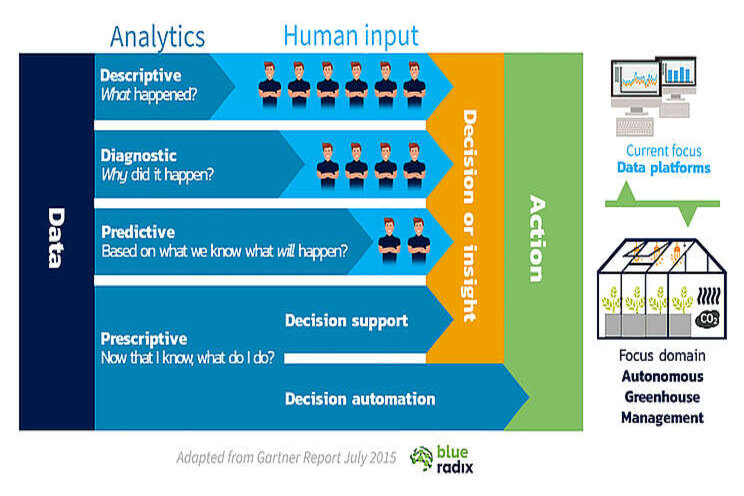The big difference between data-driven and autonomous growing
Added on 11 November 2020

Companies developing sensors are rapidly increasing in number. This was clearly visible in the entries for the Impact 2025 Innovation Prize, for example. Start-ups, scale-ups and companies with a longer history in sensor technology in other sectors have found their way to the horticulture sector.
The number of companies taking the initiative to develop a data platform is perhaps an even bigger surprise. They appear to have reached the same conclusion at the strategy table, that a movement forward proceeds along the axis of data and services. There are companies that can assume an independent role, basing the core of their revenue model on the platform. For most the platform is an extension, broadening or deepening their existing product range. It is interesting to see which platforms will win this race.
Distinguishing feature
This also raises the question: what is the distinguishing feature of these platforms and other parties focusing on data services for greenhouse horticulture? Where do the differences lie? And what is the position of Blue Radix in this rapidly-growing world of data solutions for greenhouse horticulture?
These questions are answered through two propositions and a figure, shown below:
1. A data platform alone is not enough
2. The Blue Radix Crop Controller is not a data platform
This figure provides an overview of the various data and analytics levels. The top level is the basis of all dashboards: showing data and information about 'what happened'. A lot of human thought (light blue) is then still needed to make decisions (orange) and to take actions (green). Blue Radix starts from the bottom: data is used by algorithms for advice and automating decisions. Without (or with minimal human) intervention. Then data has real value.
Explanation of proposition 1
Data itself is worth nothing. Data only acquires value when it is translated into information. When the context is clear. Dashboards do exactly that. Data is displayed graphically and is connected to other data lines, enabling comparison. For example, between two moments in time. It also becomes possible to analyze connections between things. This requires a nice and clear interface for the user. This is exactly what the data platforms focus on: unlocking data and displaying the information as clearly as possible.
People still need to analyze this data and information and draw conclusions from it. And that hasn't become any easier. The addition of sensors increases the volume of data, and the conclusions you can draw from them are also far greater. The required expertise on the part of the user, the grower, remains as high as ever. So it is not the solution for the foreseeable future, where the number of people possessing that expertise will decline. In the Netherlands, but certainly also internationally.
Explanation of proposition 2
This is exactly the reason why Blue Radix does not market and develop a data platform. Blue Radix is the AI specialist for greenhouse horticulture, and develops solutions based on artificial intelligence. The underlying Blue Radix principle is that the data must work for you. This means that algorithms process and analyze all relevant, available data. The algorithms then draw the best possible conclusions and convert these into concrete actions for physical installations, such as climate computers, irrigation systems and energy installations. Above all, a dashboard then becomes a clear and simple overview letting you establish that the algorithms meet the production and quality requirements of your cultivation target and strategy.
Of course this changes the grower's day-to-day activities. The grower becomes even more empowered and focuses primarily on the structured and data-driven definition of the cultivation strategy. This lets the grower utilize his or her creativity, knowledge, skills and innovation fully to improve the business goals year after year. The algorithms realize this strategy by continuously (every 15 minutes) processing all relevant data, determining the optimal settings and controlling the systems. That's future-proof!
Source: Goedemorgen
More news

















